#speculative ecology
Text
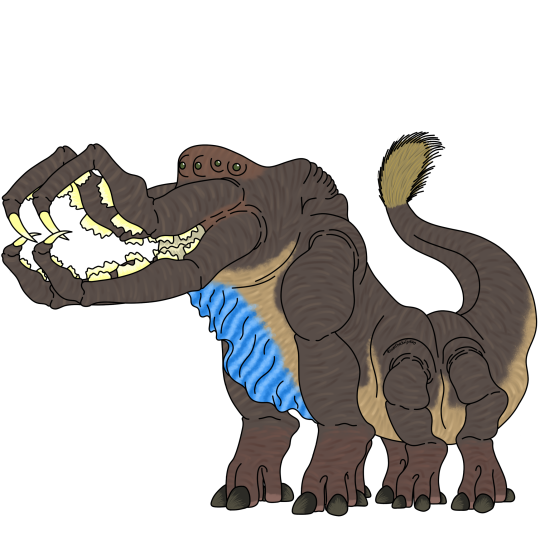
A bit of a last minute entry for @simon-roy’s refugium contest. I was pretty on the fence on if I should join but I decided why not! And it was a good excuse to try some new brush techniques.
————-
An excerpt from the Altamira Book of Wildlife
An illustration of a male Towering Snappler, so named for the snapping sounds accompanying their feeding. Snapplers are aberrant grapplers that have taken up high browsing niches. The same raptorial appendages of the family are also useful for grabbing and manipulating the branches of foliage, and so they fill a similar niche to many earthen high browsers such as elephants, chalicotheres, therizinosaurs, and sauropods. Towering Snapplers themselves average around 35-40 tons, which is a similar size range to some iconic Jurassic sauropods such as Brontosaurus and Apatosaurus. Snapplers sometimes come into conflict with some Pentapods over resources as they too can sometimes fill similar niches, but these rarely become full confrontations as the photosynthesis and bio-voltaics of Pentapods allows them to go longer between meals.
The raptorial arms manipulate and crush foliage and bark using their claws and grinding teeth that are similar to elephant teeth. Food is then shoved down their powerful beaks to be further processed in a large crop before fermenting in their gut.
Towering Snapplers typically live in herds mostly composed of females and young with a few males, and they communicate using signaling via their tail brush. Males have bright blue dewlaps, and since blue is a very expensive color in nature, brighter blues are a good sign of fitness. During breeding season only one dominant male may get breeding rights, and so males compete with each other. They flash their dewlaps at each other and raise their tail brushes high, and if that doesn’t decide a victor then they may engage in a “parallel march” like deer to gauge the size of their opponent. If either party still doesn’t back down then the last step is physically fighting with their raptorial appendages. This last step rarely happens, but it can escalate to the point of being fatal. Old experienced males are adorned with scars from previous battles. The male illustrated here has only just reached sexual maturity and lacks any scars.
#refugium2024#speculative ecology#speculative zoology#speculative evolution#xenobiology#refugium#simon-roy
33 notes
·
View notes
Text
Thought I’d post some art I did for the #refugium2024 of one of my grappler variations. I don’t know much of the world so I went with what felt right.

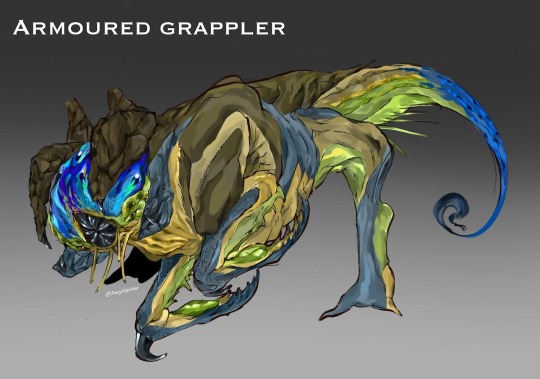
#spec bio#speculative biology#speculative evolution#spec evo#speculative fiction#xenobiology#alien species#artists on tumblr#speculative ecology#speculative worldbuilding
22 notes
·
View notes
Text
The Lancetfish is a species that looks like it comes straight out of a realistic fantasy world building project.
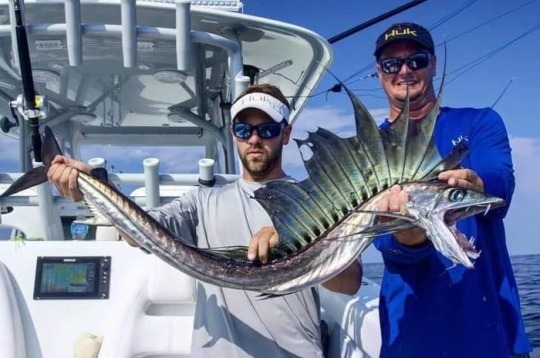
#speculative biology#speculative ecology#speculative evolution#speculative zoology#traditional art#traditional sketch#spectember#specposium#paleontology#fanart#paleo meme#paleo art#paleontologist#paleostream#paleobird#paleomedia#paleoblr#paleoillustration#paleoart#worldbuilding#world#fishing#world building#fantasy#realistic fantasy#fish#lancet fish#lancetfish
65K notes
·
View notes
Text

First named Salii'Qi character :) her name is Sillca and she lives and travels with her rancher girlfriend. Sillca is less hands on and makes and embroiders clothes with hides and fibers found in the desert plants.
Oh, you can also draw her for Artfight if you'd like <3 https://artfight.net/character/3465357.sillca-rasayae
#shes my daughter and i love her so#sillca ra'sayae#salii’qi#saliinthia#alien#spec evo#speculative evolution#speculative ecology#speculative biology#sophont#xenobiology
424 notes
·
View notes
Text
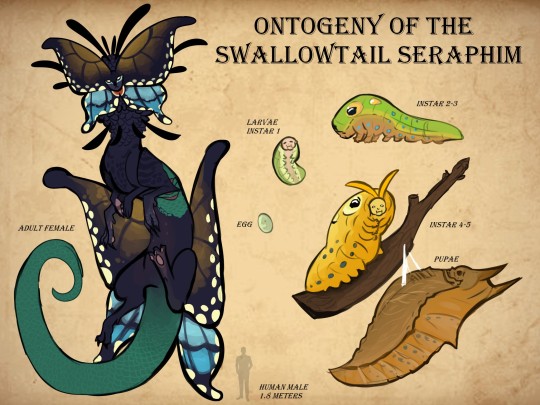


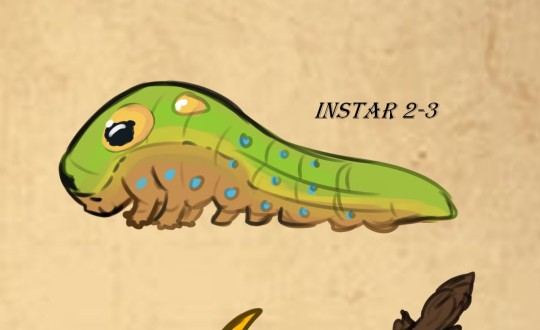
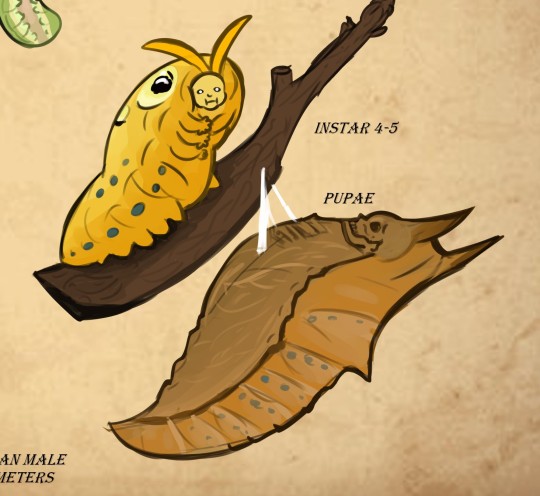
Seraphim are anomalous creatures that inhabit the InBetween.
They exhibit mammalian features such as homeothermy, fur, feathers, and the ability to lactate. However, they follow a life cycle similar to insects.
When seraphim pupate, they form a cocoon around their soft bodies. Over the course of about 20 years, the muscles and soft tissue will break down and reshape. The only part of the body that does not melt are the bones, which remain mostly intact through the entire metamorphosis.
#creature art#creature design#speculative fiction#speculative zoology#creature#fangssart#monster design#original species#speculative evolution#speculativedesign#speculative biology#speculative design#speculative ecology#speculative writing#body horro tw#body horrow cw
945 notes
·
View notes
Text
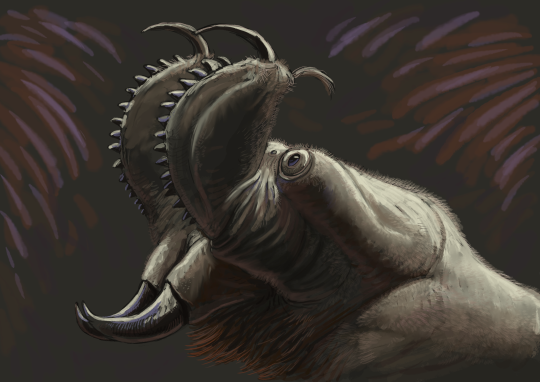



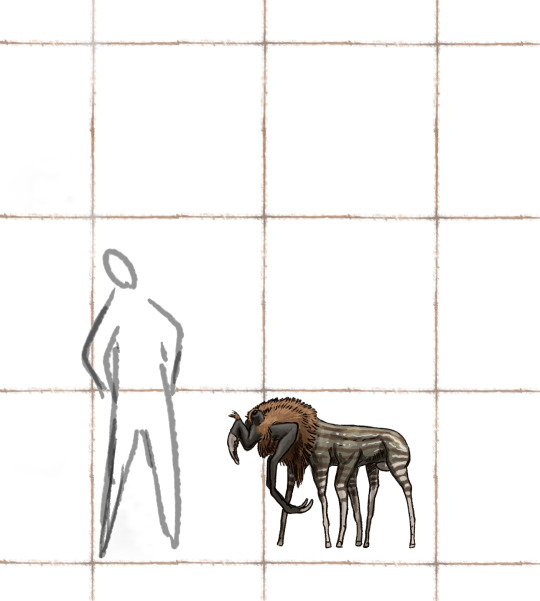





Here the sketches I did for Biblaridion's newest video
youtube
534 notes
·
View notes
Text

#curious archive#tumblr memes#meme#memes#best memes#speculative zoology#speculative evolution#speculative biology#speculative ecology#spec bio#spec evo#spec zoo#relatable memes#dank memes#dank humor#meme humor#lol memes#funny memes#chad memes#humor#youtube memes#relatablepost#relatable#relatable af#funny stuff#funny but true#memesdaily#gigachad#humour#funny shit
185 notes
·
View notes
Text
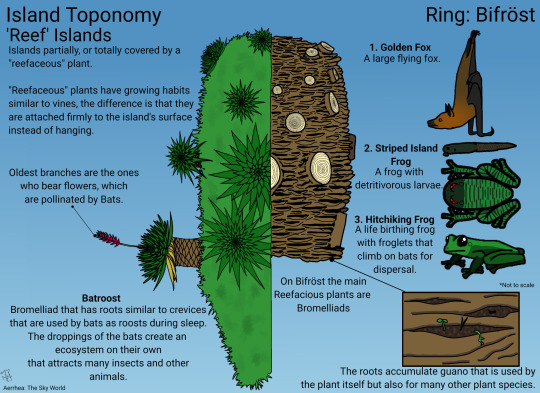
Island Toponomy
Ring: Bifröst
'Reef' Islands
'Reef' Islands are islands totally or mostly covered by "Reefaceous" or Reef-building plants, who here in Bifröst are Bromeliads.
These plants tend to be the foundation for other plants, gathering substrate for later species such as grasses, trees, etc. But also literal footing for animals not only moving from island to island but as in roosts or places to hide in. Thus they are called reefaceous/reef-builders, due to their ability to house in an ecosystem on their own within their roots.
Not all (in fact only a few) islands are completely reefaceous in nature as these kinds of plants tend to come later in the ecological succession of islands, competing fiercely with the wind-dispersed vines.
Individual Species Description
Batroost Creparophora insulobnubens (Crevice-Bearing Island-Coverer)
This plant is the type genus for not only its family but for Reef-building plants from Bifröst in general.
This plant starts out as a small, vividly colored, sweet fruit that is then consumed by animals such as bats, monkeys, goats and humans. Then carried within their stomachs to other islands where the small, hardy seeds contained within the droppings will hopefully get a strong footing to start growing many branches during its life. That is, in between the roots of other plants, including other Batroosts.
The plant itself starts to grow faster than trees but slower than the quick-growing vines, but fast enough to get a good grip on the surface of the island. Then, growing slowly over the years they spread across the island with their 'cracked' roots, collecting detritus and doing their namesake -serving as the roosts for bats.
Bats are definitely the most notorious of the daily users of this plant, using the roots to hang themselves upside down while covered by the many vines that grow over, and among the roots of the Batroost.
This is the case for the Golden Fox (Pteropus vulgaris Meaning "Common Foot Wing") which is a large, frugivorous bat from the same genus as the Flying Foxes from Earth, hence the "fox" in their name. The Golden Fox is a common (though not the only) dweller and user of these plants as roost. They not only benefits from the plant but the Batroosts also benefits from the bats, not only from the aforementioned nutrients found in their droppings (guano) but also to spread the seeds of the plant, as the fruit is a favorite meal of the bat.
However they are not the only animals to use this bromeliad, in fact many animals live their whole lives -or at least part of it- among the twisting crevices of the plant.
The Striped Island Frog (Vermigyrinus spp meaning "Worm Tadpole") is such an animal that lives part of its life among the roots of the Batroost. Although the adults live close by, hunting for insects and small vertebrates among the vines and trees, the larvae have a very specific niche. They don't necessarily need water to survive because they live in the concentrations of guano and decaying matter that accumulates in the crevices of the roots, a niche that is somewhat lacking in Aerrhea for one reason: There are no worms in this world. For whatever reason there are not annelids in Aerrhea (or at least in Bifröst) to live in and eat the humus of the shallow soil of islands, thus these frogs took this golden opportunity and exploited it. The Crevice micro-ecosystem is a well protected one and not explored by many as it is covered by thousands of vines, blocking the view of large predators and also their passage, offering a calm existence in these "pockets of nutrients" as far as "calm" can go in a constantly moving habitat. Which is also another pro for such a lifestyle as this is both a relatively competition-free ecosystem with many nutrients to consume.
The long tadpole can live for two weeks on their personal "terrariums" before metamorphosing into adults, climbing out of the roots' area and never returning again, at least that is the case for the males as the females after copulation (this species has internal fertilization) return to the crevices to lay 1-3 eggs -depending on the size of the crack and available detritus-, each on a different crevice to avoid competition among the larva and then leave them on their own until they grow into frogs and the cycle repeats again.
An example of an animal that lives its "whole" life among the nooks and crannies of the dark, understory is the Hitchhiking Frog (Viatoribus spp meaning "Passenger") who gets its name from its habits early in life. This tiny little frog also has internal fertilization, but instead of laying eggs they give birth to developed froglets whose voyage starts not long after being brought into this world. The mother frog, who lives by the crevices eating small invertebrates such as ants, climb upon roosting bats and give birth to their small versions of themselves, who using two opposing fingers grab onto the fur of their hosts and wait until they set flight again. This strategy is used due to the small size and vulnerability of these frogs, who use the larger bats as means of dispersing into other islands, giving a higher genetic diversity to these small ingenuous frogs.
#aerrhea#my art#worldbuilding#art#illustration#spec bio#speculative biology#spec evo#speculative evolution#speculative zoology#fantasy#speculative ecology#speculative worldbuilding#speculative botany
34 notes
·
View notes
Text

The Gunslinger spider
Name pending
Species: Temnoceran
My first ever monster hunter monster oc! inspired by boleadora spiders, this large monster keeps a herd of common prey monsters (such as aptonoth) within its territory in order to attract the flying wyverns it preys upon (and as livestock in case of emergency); extremely territorial about its herd, will not just attack its preferred prey but also anything that threatens them.
The boulders it stacks in its back and webbed bag act both as natural armor and camouflage as well as its ammo, as it attaches the rocks to threads of silk in order to hurl them at its prey both to knock it down and to entangle and pull at it.
Around its mouth there are pores that produce threads of silk which help detect vibrations in the air, and also can be combined with the sticky substance produced by its fangs (gets more viscuous when in contact with air) to quickly weave threads in the middle of a fight.
There are accounts of older and more experienced individuals using smaller, ignitable stones with its front limbs to directly engage opponents in close combat, causing burns and concussions from the blasts (an action very reminiscent of one of Qurupeco's abilities, perhaps these older individuals have engaged in fights with them? to predate them or to take advantage of their call?)
#monster hunter#monster hunter oc#monster hunter monster oc#monster oc#temnoceran#spider#mebi's art#digital art#krita#rkgk#spec evo#speculative biology#speculative ecology#this is also inspired by cowboys if it isnt obvious lol
130 notes
·
View notes
Text
When creating speculative biology art, how well do you research the subject it’s based upon?
Common knowledge: things everyone might know
Minimal research: basic why’s and how’s your subject works, surface depth things
Extensive research: specific anatomical terminology, similar real-life species, information digestible to other spec bio artists (but might be confusing to those who are not)
Complete research: evolutionary lineages, intricate anatomical similarities to real-life species, extensive environmental/individual behavior, information may be confusing to those lacking knowledge in biology
#thunderposting i guess#biology#spec bio#speculative biology#speculative ecology#speculative evolution#speculative zoology#spec evo#xenobiology#I’m curious because sometimes I want to include lots of information but I want my audience to be able to pick up what I’m putting down
31 notes
·
View notes
Text
Spectember Promplist
Me and my friends made this one!
Go wild with these, and be sure to have fun!

Sheet drawn by @zenwyrmmess
#speculative biology#spec evo#spec council#speculative ecology#speculative zoology#speculative evolution#Spectember#Spectember 2023#worldbuilding#creature design#spec bio
81 notes
·
View notes
Text


As a late celebration of the 20th Anniversary of monhun, I decided to update my skulls of the Raths
#skulls#art#rathalos#rathian#speculative biology#speculative evolution#speculative anatomy#speculative zoology#speculative ecology#monster hunter#monhun#monsterhunter#monster hunter biology
98 notes
·
View notes
Text
If Wompers from my project (Land Of Borease) where selectively bred like todays dog breeds.
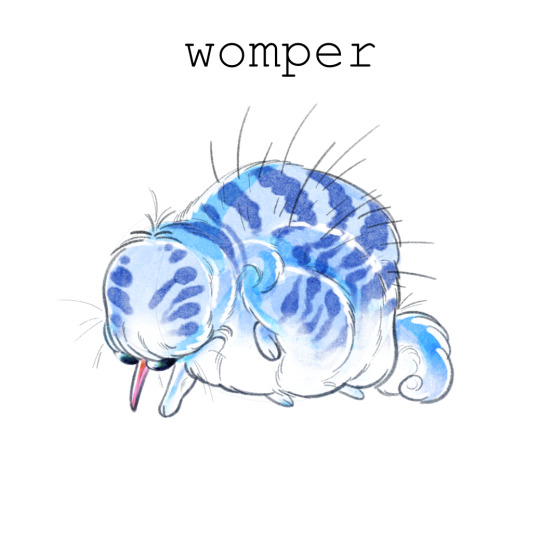
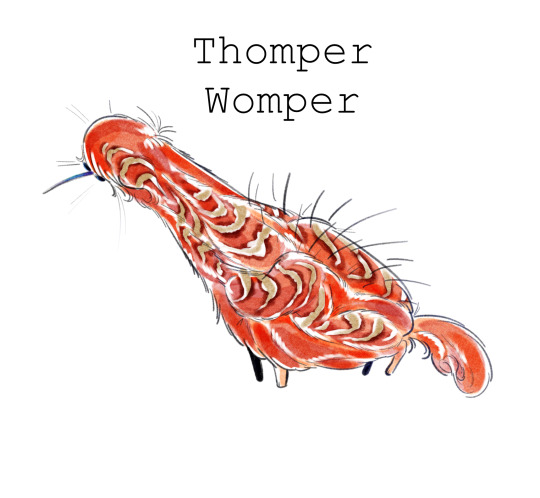


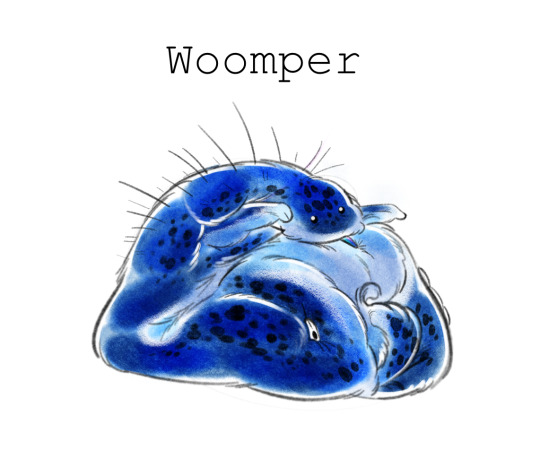
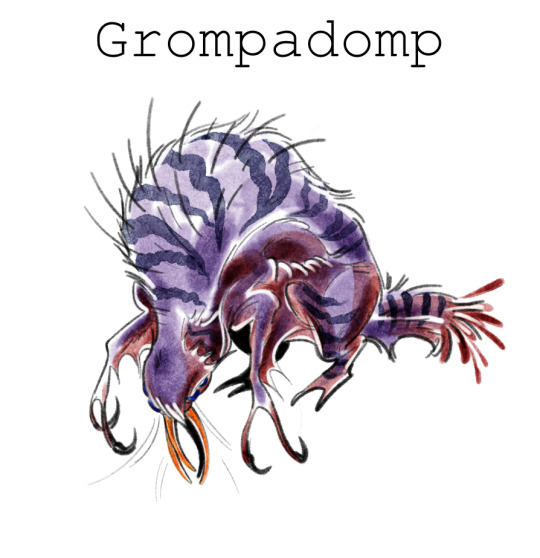
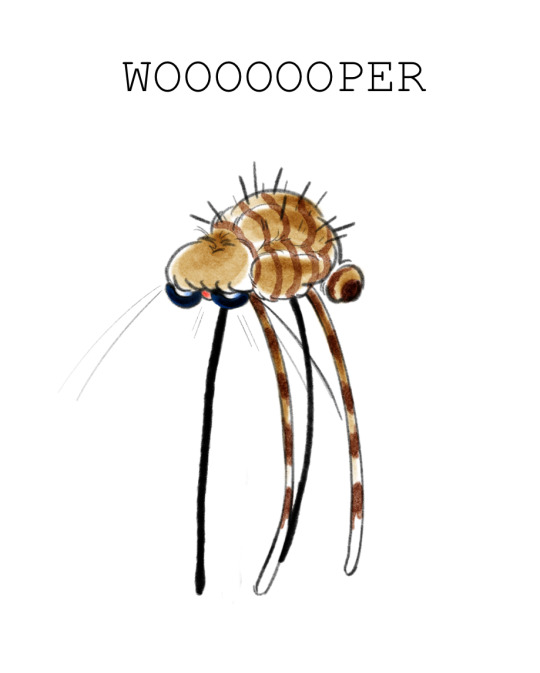
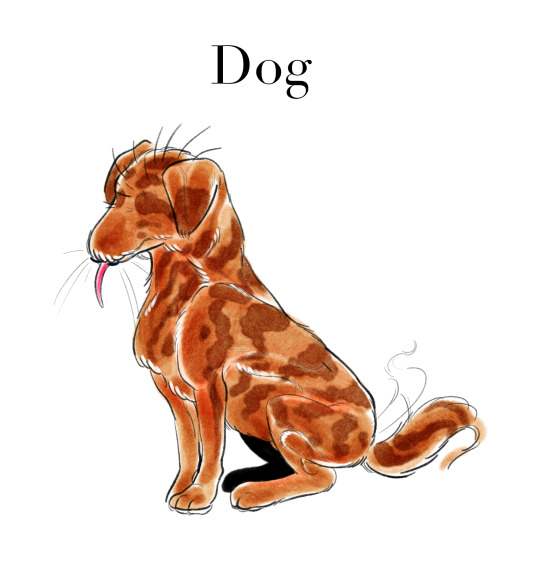
#xenobiology#alien species#spec bio#spec evo#speculative biology#speculative evolution#speculative ecology#speculative fiction#artists on tumblr#speculative worldbuilding#land of borease
922 notes
·
View notes
Text
The Takin is such a whimsical herbivore, like God commissioned Dr. Seuss for this one.



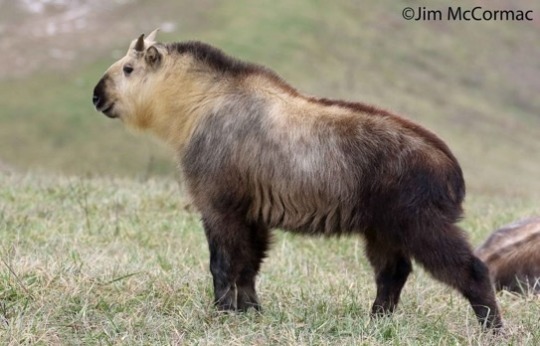
#speculative biology#speculative ecology#speculative evolution#speculative zoology#traditional art#traditional sketch#spectember#paleontology#specposium#fanart#animals#takin#cute animals#paleo meme#paleo#paleoillustration#paleo art#paleontologist#paleoblr#creature#shaggy animal#herbivore#dr. seuss
23K notes
·
View notes
Text
The Salii’Qi - Saliinthia’s Sophonts
The primary sophont species residing on the warm, Earth-like world of Saliinthia are the Salii’Qi, a race of strange mammalian-insect creatures. They have dispersed into four main subspecies, two sedentary groups who live in the forests and islands respectively, and the two nomadic groups who call the grasslands and deserts home. Through this blog I will delve deep into their various cultures, religions, technology, and day to day lives living on Saliinthia!
Basic Biology
The Salii’Qi evolved from intelligent, largely carnivorous pack hunters, with the grassland subspecies being the oldest ones. They have intelligence equivalent to that of human beings, though tending to be better at problem solving. Their mammal-like biology gives them warm blood and dense bones, though their skeleton is derived from a graphite filled exoskeleton similar to that of insects, that was slowly internalized over the course of millions of years. They are egg layers, and have a complex life cycle not unlike that of an Earth caterpillar or beetle.
Salii’Qi have three sets of eyes, two are simple and detect movement and light only, while the third pair is complex and has an expanding and contracting pupil like Earth’s vertebrates. They hear through bright colored ear flaps held up by cartilage, able to swivel and pin to show emotion or focus in on certain sounds.
Salli’Qi have four pairs of limbs, two are used for walking while the other two are used for physical manipulation. One pair of limbs are attached to the skull. These “arms” evolved from pedipalps, now used for eating and handling weapons or other objects. The pedipalps are weaker than their forearms, so they usually use those for heavier work like lifting large objects. With the evolution of centaurism in these creatures, they lost a lot of flexibility in their backs, and so can no longer keep their forearms on the ground for long periods of time.

The skeleton of the Salii’Qi have a dark color due to the high amount of graphite present in their bones, with black teeth stronger than ours. Their bones are dense and very similar to ours, although the ribs are free floating and connected with cartilage. Some of the vertebrae located near the end of the body are fused, which aid in supporting the back. Ancient relatives had a connected skeleton below the skin, which resembled that of insects. To allow for more flexibility and dexterity, those bones have now been reduced to cover less area.

Salii’Qi have organs very similar to ours, but have a unidirectional respiratory system. They breathe in through two spiracles beneath their eyes, and after passing through the lungs, it is exhaled through the two spiracles placed behind the first pair of leg’s shoulders. This allows faster replacement of oxygen in the bloodstream, fueling their insect-like biology.
Their digestive system extremely similar to ours, the only notable difference being the tiered stomach, which allows for tough protein rich plant matter to be digested.
Salii’Qi have a gonochoric reproductive system, meaning they have two sexes. Both sexes have bright colored ear flaps and antennae, but during the spring the male coloration deepens for mating. Females are slightly larger than males, and have duller colors. Depending on the culture, females may take multiple male partners during the mating season, or only keep one partner for their whole life.
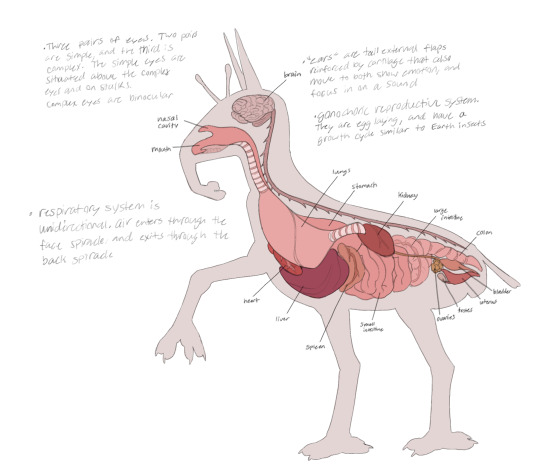
Subspecies
The Salii’Qi are spread over four main subspecies, and are regional variants. As mentioned before, the nomadic grasslanders were the first successful variants, which then radiated into the forest, desert, and island subspecies. As the names imply, they live in settlements and groups around specific biomes they are best adapted to.

The foresters are mostly a sedentary group, and also physically the largest. They eat the most fruit and plant matter out of any other , and have learned how to farm and selectively breed crops. They have long, thin limbs for reaching up into the vegetation, and upturned simple eyes to see differences in the shadows above. They are skittish and try too keep to themselves, but enjoy trading their crops with other groups.
Grasslanders are nomadic, but have specific areas they return to during nesting season. They follow the herds of large grazers who roam the grasslands, using their good stamina to their advantage. They are a proud and strong group, seen as kind and humorous. They are artisans, creating unique goods and clothing out of hides and pelts for trading with other groups.
Desert dwellers live in smaller groups, and instead of hunting, they primarily ranch and travel with herds of domesticated livestock. Desert Salii'Qi forage desert fruits, roots, and other plant matter before a harvest. They travel to feeding grounds during the fall and winter, but return to fertile river communities during the spring and summer where plants for livestock flourish along the banks. During this time, the desert Salii-Qi raise their children to take on their next journey.
Islanders are small, social Salii'Qi who settled on an archipelago millions of years ago. They are the most well adapted group and the second oldest subspecies. Islanders have partially webbed feet, seal-like fur, powerful limbs, and higher back spiracles which makes it easier to spend time in the water. They primarily feed on fish and island fruit which they've selectively bred. Islanders mainly spearfish, but also use boats for fishing and trade. They routinely voyage to the mainland to trade goods, and some have even settled on the mainland shores.
#salii'qi#saliinthia#spec bio#speculative biology#biology#xenobiology#alien#speculative fiction#speculative ecology#aliens#sci fi#evolution
198 notes
·
View notes
Text
Angels not being created but having evolved that way has some very interesting implications as to their physiology and biology. For instance, supernumerary eyes on the wings. Wings having eye designs is a trait usually found in prey animals, as a way to scare off predators, which begs the question what the fuck could be an Angel’s natural predator
Personally, I think they evolved in a higher stress ecosystem, which is why they are so awe inspiring in humans, while still being near the bottom of their respective food chain
#jellyfish jams#speculative evolution#speculative ecology#dnd#dungeon and daddies#hallow woods setting#angelgirl#doll posting
122 notes
·
View notes